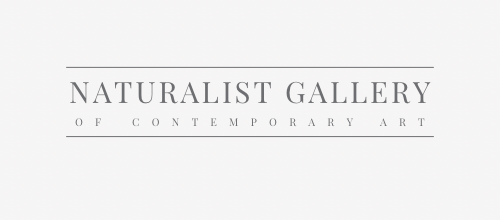Lascaux Cave Paintings (15,000 BCE) paleolithic humans
The human figure, with its diverse and intricate depictions, has played a central role in the world of art.
Human art traces a rich history, from ancient patterns and sculptures to contemporary expressions. The human figure remains a timeless muse, connecting art with humanity's essence.
This journey through the evolution of human figure representation takes us from the earliest artistic endeavors of Upper Palaeolithic Europeans, through the cultural significance of the human form in various regions, and into the resurgence of figurative art in contemporary times. It unveils the significance of the human figure as a timeless muse and explores its role in shaping the world of art.
Explore our curated selection of contemporary artists from around the globe.
Naturalist Gallery offers artist representation internationally. Apply your art.
Early Origins of Human Figure Representation 
Venus of Willendorf (31,000-18,000 BCE) paleolithic humans
Human beings have a remarkable history of creating visual art, a defining characteristic of our species. The concept of art encompasses an array of elements, including color, pattern, and the representation of visual likeness. The earliest known evidence of artistic behavior can be traced back to Upper Palaeolithic Europeans over 30,000 years ago. Their 2D and 3D art forms, conceptually equivalent to those of recent centuries, reveal the full maturity of human cognition and symbolizing capabilities. These ancient artworks tell us that the origins of art predate worldwide human dispersal, pointing to an African genesis.
Making Traditions with Art

Ndebele House Painting (1995) Lesedi Cultural Village
The origins of art lie in the African continent, and the earliest forms of artistic behavior are intertwined with human body decoration. Ochre skin coloring and the use of beads, while possibly serving functional purposes, are early examples of artistic expression. The addition of zig-zag and criss-cross patterns, nested curves, and parallel lines to the human body marked the birth of patterns created independently from the body. Notably, these patterns bear a striking resemblance to entopic phenomena, suggesting a physiological origin.
The Transition to 3D Art 
The Great Sphinx of Giza (2558-2532 BCE) Ancient Egypt
The journey of human figure representation evolved from recognizing human likenesses in natural objects to modifying them to enhance their human characteristics. The cognitive process of creating 3D art, including sculptures and reliefs, involves the deconstruction of objects into a series of surfaces. Early tool-making techniques provide insights into the cognitive processes that enabled the creation of these intricate art forms. The neural structures that underpin this cognitive ability represent a significant evolutionary change, offering advantages in tool-making and hunting, thus influencing the trajectory of artistic expression.
Cultural and Regional Variations 
Mask (Le Op) (1850-1899) Torres Straight Island people
Terracotta Warriors (210-209 BCE) Ancient China
Moai facing inland at Ahu Tongariki (1250-1500) Rapa Nui people
The cognitive ability to create art separate from the human body likely originated in Africa, although the practice might have commenced at different times in genetically and culturally distinct groups. This divergence in timing led to the regional diversity seen in both ancient and contemporary art. At each stage of artistic evolution, stylistic change emerged through the work of rare and highly gifted individuals who pushed the boundaries of artistic expression.
The Human Figure in Contemporary Art 
Three Studies of Lucian Freud (1969) Francis Bacon
With a backdrop of modern art trends characterized by abstraction and a quest for the invisible, it wasn't until the 1980s that human figures started to reappear in the works of avant-garde artists. This resurgence reaffirmed the enduring fascination with the human form in contemporary art. It is a testament to the figure's capacity to transcend time and continue to inspire creativity, bridging the gap between traditional representations and innovative interpretations in the ever-evolving landscape of art.
Naturalist Gallery Human Exhibition

The Cosmic Punchline (2022) Marko Weirdr
Our Lady (2020) Sarah Rieser
Azarath Metrion Zinthos (2023) Carlo
Decision (2019) Shota Imerlishvili
Fruit Loops (2023) Mark Flake
Trapped Chilean Miner Looking to the Light (2012) Jeanie Wakeland
Tut (2022) Gavin Coates
Bukowski (2023) Georg Sili
Purell (2022) Sam Heydt
The Goose is Cooked (2023) Jena Ataras
View limited edition prints by contemporary artists at Naturalist Gallery.
The rich history of human figure representation in art is a testament to the enduring fascination with the human form and its diverse interpretations. From its origins in Africa to the complex cognitive processes that drive artistic creation, the human figure has left an indelible mark on the world of art. Whether through ancient patterns, sculptures, or contemporary explorations, the human figure remains a significant subject, reminding us of the profound connection between art and the essence of humanity.
Power Figure (Nkisi Nkondi) (late 19th century) Kongo peoples
You may also find the following articles helpful:
Form: Understanding Dimensionality
Tone in Art: Understanding Color Value
Line: Types, Techniques, Element of Art
How to Get Your Work in an Art Gallery

